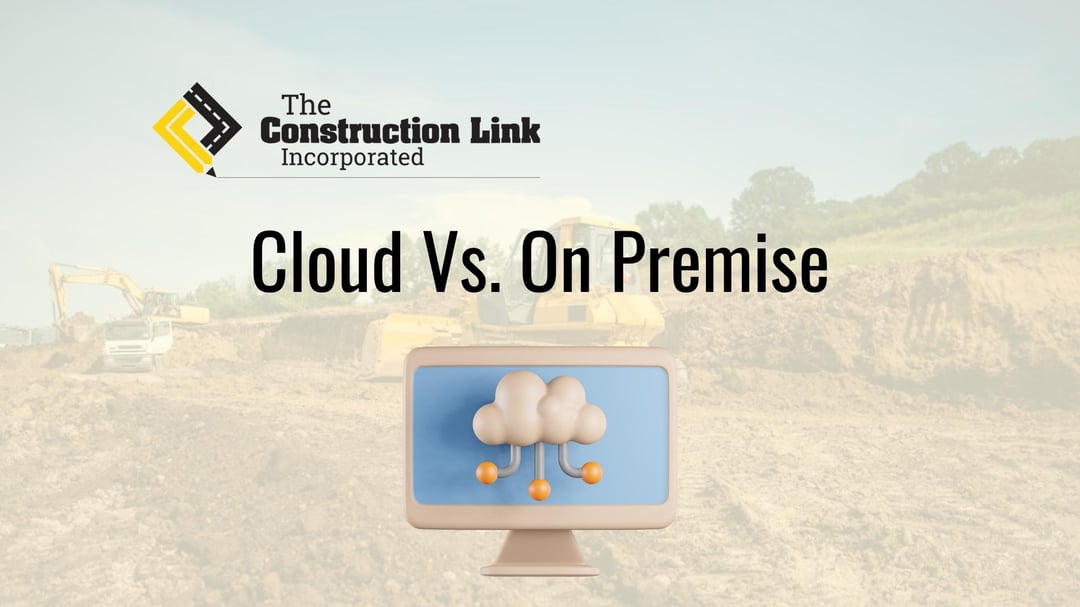
Cloud Vs On-Premise Construction Estimating Software
Cloud Vs On Premise Construction Estimating Software
Choosing the right civil construction bidding software for your growing construction company can be a challenging process. Adding in the various options of deployment, including cloud and on-premise, can further complicate an already strenuous decision. There are distinct advantages and drawbacks to both options, which we’ll review in this blog. The good news is, is that regardless of what option you decide to go with, you’ll be more than happy to have a sophisticated heavy construction estimating solution.
Cloud Vs On Premise Comparison
First, it’s important to understand the difference between a cloud and an on premise bidding solution. The fundamental difference between the two is where the software resides.
On premise estimating software resides on the user’s local computer. It is a traditional software application that is installed locally. Data within the program, including projects, rates, libraries, etc. is saved on the user’s computer (and sometimes on a company’s internal server).
Cloud estimating software resides on the provider’s hosted server. It is not installed on the user’s computer, instead, it is accessed via a link, a web browser, or other interface. Data is saved on the provider’s private cloud and internet access is required to access both the software and the data.
Internet Connection
- On Premise – If your estimators do their bidding at locations with unreliable or unstable internet connections, the on premise estimating software may be a better option. Estimators can feel confident that as long as they have their computer, they can access their bidding software and their data.
- Cloud - If your estimators generally are not in the office and are working in the field, on the job site, at home, or away from the office, the “anywhere, anytime” accessibility of cloud estimating software is a key benefit that allows for flexibility and mobility. The software and the data are always available via internet.
In-house IT Infrastructure
- On Premise – If you have multiple estimators that work simultaneously on projects, you will need in-house infrastructure for the multi-user environment. This includes staff with the knowledge to implement and maintain the necessary hardware and software. However, if your estimators do not require a multi-user environment, this option may be more cost effective.
- Cloud – With cloud estimating software, estimators can focus on estimating rather than installing and updating the software they use to do it. Cloud estimating software bypasses the issues that come with operating systems, anti-virus software, etc. Projects and bids are saved on the provider’s private cloud so if your computer crashes, you don’t lose years of estimates.
Cost
- On Premise – Tends to have a higher implementation price and lower renewal pricing.
- Cloud - Tends to have lower implementation price and higher renewal pricing.
It’s important to note that most sophisticated construction estimating software solutions will have an implementation cost and a renewal cost. What many companies hide in the fine print are: training & onboarding, hosting fees, extra fees for features within the program, renewal dates, etc. It’s critical that you take the time to understand what your actual total cost is out the door, what it will cost to renew, and when your renewal dates are.
Regardless of what type of the type of estimating software deployment you choose, take the time to evaluate these factors based on your specific needs and priorities. Ultimately, it comes down to what will help your company become successful and allow you to grow. Here at The Construction Link, Inc., we offer both cloud and on-premise estimating solutions at competitive prices and no hidden fees. Let us help you decide on your next steps!




